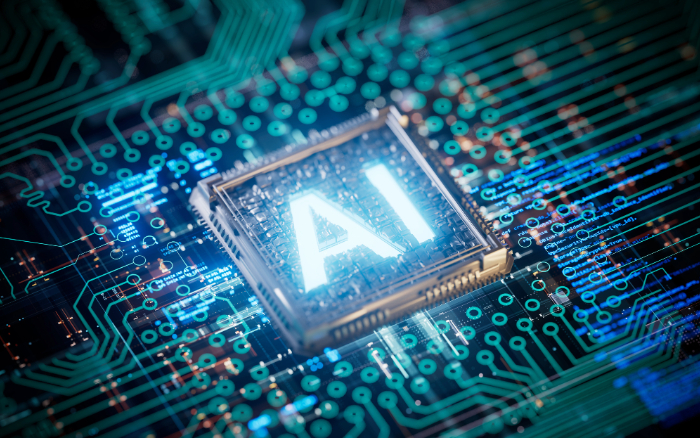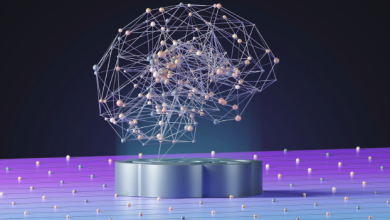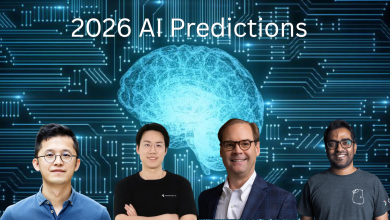
During the dot-com bubble, those working at Cisco used to say, “Build it, and they will come.” The biggest challenge at that time was that while networks were being built, the applications that would drive consumer demand weren’t ready. The internet was largely limited to email, basic web portals, minimal e-commerce, and static content delivery.
Google, founded in 1998, began dominating the internet search space in the early 2000s. Soon after, the rise of social media (LinkedIn, Facebook, YouTube, Instagram) and cloud computing (AWS in 2006) transformed the internet. This led to a shift where even enterprise workloads moved toward the cloud, marking a major evolution in networking.
However, today, we are facing the opposite problem of what Cisco encountered in the 2000s. Now, we have massive amounts of data, yet the networking models required to support this data exchange are not keeping up. The internet is undergoing its biggest transformation—shifting from a content delivery network to a public-private data exchange fabric.
The AI Data Imperative: Following the Flow
The AI-driven era demands a new approach to networking. AI models rely on vast data lakes, often positioned at the edge, while compute infrastructure for AI processing primarily resides in cloud environments. Most enterprises do not have the specialized GPU clusters needed for large-scale AI training, forcing them to leverage cloud resources.
Once trained, these AI models must be distributed efficiently across edge locations, data centers, branch offices, and multiple cloud platforms. This creates unprecedented demands on network infrastructure, which many organizations are unprepared to handle.
Challenges in AI Networking
- AI models require unrestricted access to diverse datasets, but enterprises demand permission-based control.
- AI-driven applications are highly dynamic, requiring low latency and on-demand data exchange.
- Current networking architectures struggle to support AI’s massive and unpredictable traffic flows.
Satya Nadella has raised a critical question: Is AaaS (Agents as a Service) the new SaaS? AI agents are set to redefine how users interact with technology. But to realize their potential, enterprises need a new kind of network architecture—one designed for AI-driven, real-time data exchange.
Why Today’s Networks Fall Short
Most enterprise networks were not built for real-time, ephemeral data exchange. They were designed to support predictable, stable workloads. However, AI requires:
- High-performance real time on demand connections between every node and distributed data sources
- SLA-grade reliability for mission-critical applications
- Consistently low latency to support real-time processing
- Global compliance capabilities for AI-driven regulatory demands
- Rapid deployment and scalability for evolving workloads
Traditional Networking Limitations
- Service Provider (SP) private networks offer reliability but come with high costs and long deployment cycles.
- SD-WAN overlays fail to support AI-driven, ephemeral data flows due to their reliance building overlay tunnels
- Current routing architectures need to evolve for state for AI’s dynamic, on-demand data exchange.
To meet the needs of AI, a new model is required—one that supports publish-subscribe (pub-sub) networking and real-time data orchestration.
Monetizing MPLS/IP as a Data Exchange Fabric
As AI systems become increasingly autonomous, they no longer operate within traditional ownership models. The key to unlocking AI’s potential lies in implementing a Pub-Sub-based permission model that enables controlled, on-demand data exchange.
The Next-Gen Pub-Sub Network Model
- Seamlessly connect private and public AI agent workloads while maintaining security and compliance.
- Leverage a real-time, secure authenticated event-driven pub-sub network for ephemeral, AI-driven data flows.
- Monetize MPLS/IP private networks as the backbone for secure, high-speed AI data exchanges.
- Implement fine-grained data access control, ensuring compliance and security at every step.
- Support AI agents as network intelligence, enabling dynamic, autonomous data flows.
AI as Network Intelligence: The Self-Healing Infrastructure
As AI presents new challenges for networking, it also provides compelling solutions. AI-driven network intelligence can:
- Self-optimize networks dynamically, adjusting bandwidth and routing as demand changes.
- Recognize anomalies and predict failures, reducing downtime and improving security.
- Enable Zero Trust access control, ensuring every AI-driven data exchange is authenticated and authorized.
Building the AI-Ready Network
To prepare for the AI era, enterprises must:
- Adopt Hybrid Network Architectures – Combine private networking performance with modern, disaggregated designs.
- Implement Network-as-a-Service (NaaS) – Enable on-demand AI networking capabilities without large capital investments.
- Prioritize Network Automation – Allow real-time adjustments based on AI workload demands.
- Enhance Security & Compliance – Strengthen encryption, threat detection, and data sovereignty.
- Optimize for Low Latency – Deploy edge computing solutions to process AI data closer to the source.
Navigating AI-Driven Regulatory Complexity
As AI workloads grow, regulatory compliance becomes more challenging. Enterprises must navigate: More and more countries are now talking about date sovereignty laws around few critical data.
- Data sovereignty regulations (GDPR, CCPA, AI Act, etc.).
- Compliance for high-risk AI applications (ensuring transparency and accountability).
- Dynamic routing for regulatory compliance (directing AI data based on regional requirements).
Looking Ahead: The Network of 2027
Over the next three years, enterprise networks will be transformed by AI. We anticipate:
- AI-Designed Networks – AI will automatically design and optimize networking infrastructures.
- Intent-Based Networking at Scale – Businesses will define networking needs as policies, and AI will implement them.
- Quantum-Resistant Security – AI will help develop encryption standards resilient to quantum computing threats.
- Autonomous Self-Healing Networks – AI-driven infrastructure will predict and resolve failures before they impact operations.
The Path Forward: The Network as an Innovation Platform
The convergence of AI and networking represents one of the biggest technological shifts since cloud computing. Enterprises that recognize networking as a strategic enabler for AI—rather than just an infrastructure layer—will gain substantial competitive advantages.
The firms that thrive in this new era will understand a fundamental truth:
In the age of AI, the network is no longer just plumbing—it is the platform on which innovation is built.




